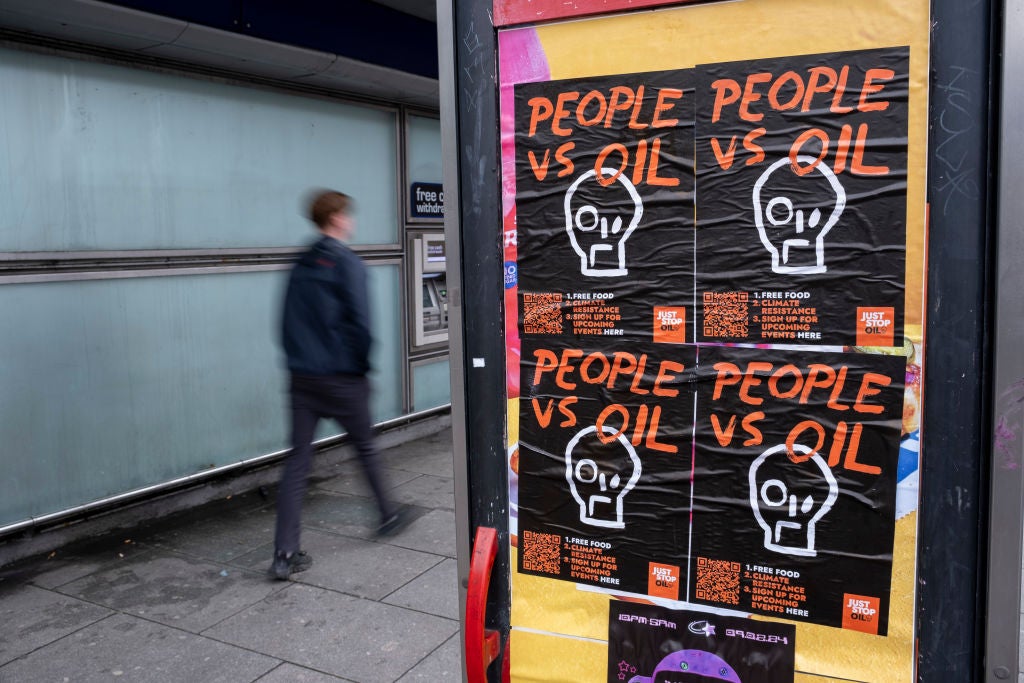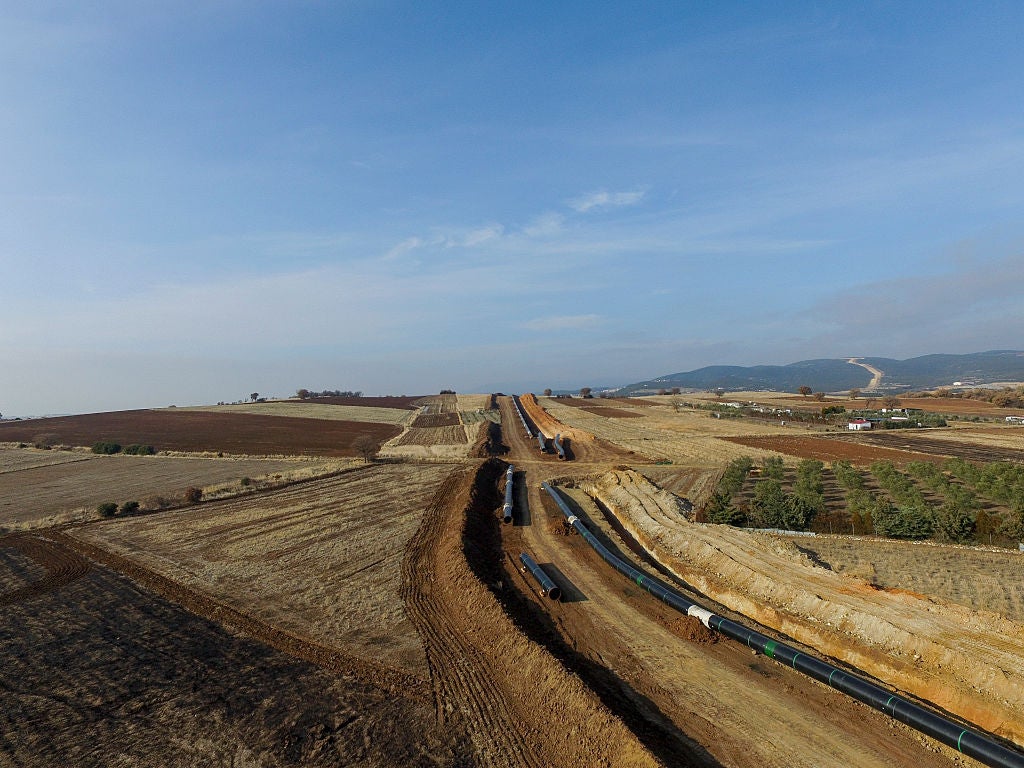
When Bernard Looney became oil major BP’s CEO in 2020, his vocal interest in how the company could transition towards a low-carbon future inspired hope that he would be a driving force in realising BP’s 20-year ambition to go ‘beyond petroleum’.
Three years later, with Britain caught in the headwinds of interlocking global energy and cost of living crises, BP has announced that it is backtracking on its climate targets, now promising to reduce its carbon emissions by 20–30% by 2030 rather than its previous target of 35–40%. BP and competitor Shell have also announced bumper profits for 2022 of £22.4bn ($27.14bn) and £32bn, respectively.
However, the Wall Street Journal reported that Looney had expressed disappointment in the returns profile of the company’s Renewable Energy investments, and that he wished to pursue a “narrower green-energy strategy”. A few days later, recently appointed CEO of Shell Wael Sawan said in response to a question about the company’s plans to expand renewables, that he “cannot justify going for a low return… If we cannot achieve the double-digit returns in a business, we need to question very hard whether we should continue in that business”.
According to analysis published on 7 February by the Common Wealth think tank, BP spent more than 14 times as much on shareholder payouts (including dividends and share buybacks) than on low-carbon investments last year, while Shell spent 7.6 times more on share buybacks than on total investments in low-carbon energies, which includes ‘gas-related activities’. According to Common Wealth’s analysis, Shell spent $3.5bn on low-carbon investments in 2022, an increase of 200% on 2019, while BP spent $1.02bn – representing a three-year increase of 500%.
“The pivot back toward oil and gas – and the prioritisation of shareholders over renewable investment – confirms a critical lesson: the for-profit corporation is poorly equipped to deliver the energy transition at the required speed,” Mathew Lawrence, director of Common Wealth, said in a press statement in response to BP’s results. “Its incentives and purpose dangerously misalign with the needs of people and planet.”
See Also:
Separate research produced in early February by the NGO Reclaim Finance, shared with Energy Monitor, shows that BP invested just 6% of its total capex in renewables in 2022, compared with 14% for Shell and 24% for TotalEnergies. The three US oil majors in its sample – ExxonMobil, ConocoPhillips and Chevron – did not record any spending on renewables, although ExxonMobil did disclose a plan to build a large-scale, low-carbon hydrogen plant in Texas by 2027 or 2028 and Chevron acquired Iowa-based biodiesel producer Renewable Energy Group for $3.5bn.
How well do you really know your competitors?
Access the most comprehensive Company Profiles on the market, powered by GlobalData. Save hours of research. Gain competitive edge.

Thank you!
Your download email will arrive shortly
Not ready to buy yet? Download a free sample
We are confident about the unique quality of our Company Profiles. However, we want you to make the most beneficial decision for your business, so we offer a free sample that you can download by submitting the below form
By GlobalDataAssessing the impact of oil majors' low levels of renewables investment
According to Reclaim Finance’s analysis, oil majors that are investing in renewables are spending an average of 15% of their capex on low-carbon projects.
Taking current spending into account, as well as oil and gas majors’ climate targets, sources estimate that by 2030, oil and gas majors will be spending between 20% (Reclaim Finance) and 50% (Wood Mackenzie) of their total capex on renewables, although these projections do not take into account recent developments such as the war in Ukraine, which has played a part in BP rolling back its targets.
Either way, spending one dollar on renewables for every four on fossil fuels, or even the same amount on both, would put oil majors out of step with the demands of the energy transition, according to research company BloombergNEF.
That said, so far, the market has not looked favourably on Looney’s ambitions to pivot BP towards a cleaner future. BP’s share price has lagged behind rivals since he took over the company’s helm. Following Looney’s announcement that the company planned to double down on fossil fuel investment, BP’s share price jumped to its highest valuation in three years.
According to Bruce Robertson, an energy finance analyst at think tank the Institute for Energy Economics and Financial Analysis: “From the point of view of oil and gas companies, they have to look at the trade-off between short-term gratification and long-term results.” Gas is now proving extremely profitable for the oil majors, Robertson concedes, but the market will experience a “glut” around 2026, when increased production coincides with multi-year declines in consumption.
The short-termism underpinning oil and gas majors’ strategies is well illustrated by CEO bonus programmes that are “skewed towards the short-term", Robertson adds. Oil majors have taken steps to increase the share of bonuses linked to environmental targets – BP and Shell both increased the ESG proportion of remuneration targets from 10% in 2019 to 15% in 2021 – but they remain a small part of overall compensation packages.
While it is necessary that oil and gas companies cease additional fossil fuel expansion for a good chance of limiting global warming to 1.5°C, it is unclear if future renewable energy growth is actually reliant on investments from such companies. If the likes of BP and Shell shut down their entire business tomorrow, would the world lose out on a vital stream of capital? Robertson thinks not, arguing that the contribution of the oil majors to renewables “really isn’t that much”.
As Reclaim Finance estimates that the combined annual low-carbon investment of nine oil majors (BP, Chevron, ConocoPhillips, Eni, Equinor, ExxonMobil, Repsol, Shell and TotalEnergies) was around $10bn on average across 2021 and 2022, that would put their contribution to low-carbon investments, estimated to be $755bn in 2021, at around 1.3%.
The public financing dilemma
Some have argued that given oil and gas majors' recent bumper profits, they should not be receiving additional public support for their low-carbon investments, significant or not.
This concern was raised in recent months by the non-profit Bankwatch, which has criticised the European Investment Bank (EIB)’s decision to introduce an exemption to its existing ban on lending to fossil fuel majors developing renewables projects.
The ban was introduced in the run-up to COP26, under the EIB’s Paris Alignment for Counterparties Framework, which also mandated that EIB investees have a decarbonisation strategy in place. In October 2022, in light of energy security concerns following Russia’s invasion of Ukraine, it was amended to allow “innovative low-carbon projects” led by fossil fuel companies, as long as they disclosed a plan to transition.
[Keep up with Energy Monitor: Subscribe to our weekly newsletter]
Just one company, Spanish oil and gas giant Repsol, has so far benefitted from this loophole – although a handful more are expected to follow in the coming years – receiving a €120m loan towards the construction and operation of its first biofuels plant, which will use food waste to create clean fuels for transport.
“[This move calls into question] the EIB’s climate credentials and how it positions itself as climate leader among international financial institutions,” Anna Roggenbuck, EIB policy officer at Bankwatch, told Energy Monitor. Bankwatch also points out that the EIB’s December 2022 deal with Repsol came more than two years after the initial contract on the plant was approved, raising the question of whether the project really needed public financing to go ahead.
In response to the question of whether it was necessary to provide capital to a company expanding its oil and gas investments when other opportunities for renewables investment exist, an EIB spokesperson told Energy Monitor that the bank “recognises that oil and gas producers are in a strong position to invest in particular types of innovative low-carbon projects which are critical to the achievement of net-zero emissions”. They added that the loan in question supports the “Herculean” task of meeting additional investment needed for the goals of the Paris Agreement.
There is no doubt that oil majors are currently in a strong position to provide much-needed capital to roll out vital energy transition technologies. It remains to be seen whether that will still be the case in a decade’s time.







